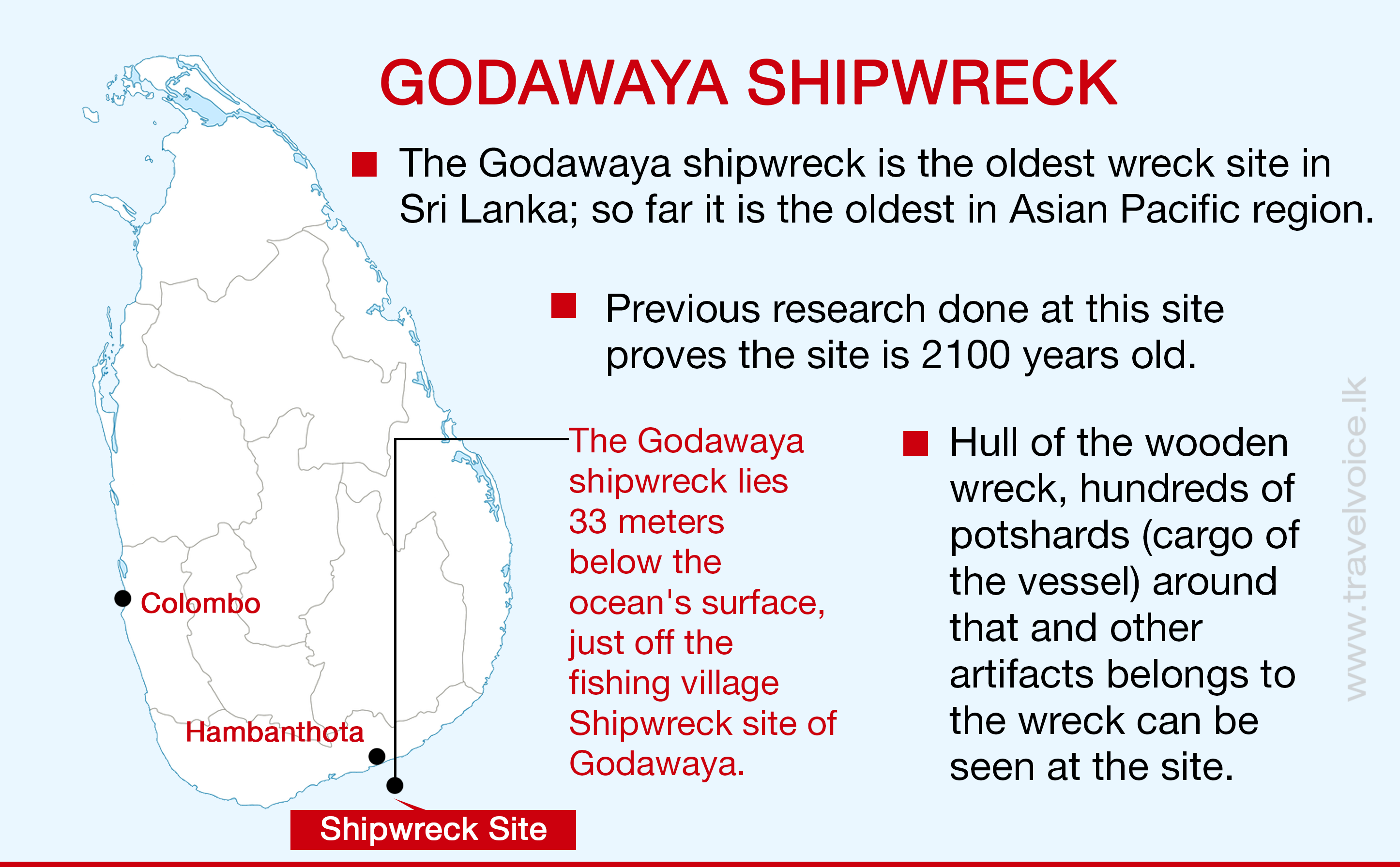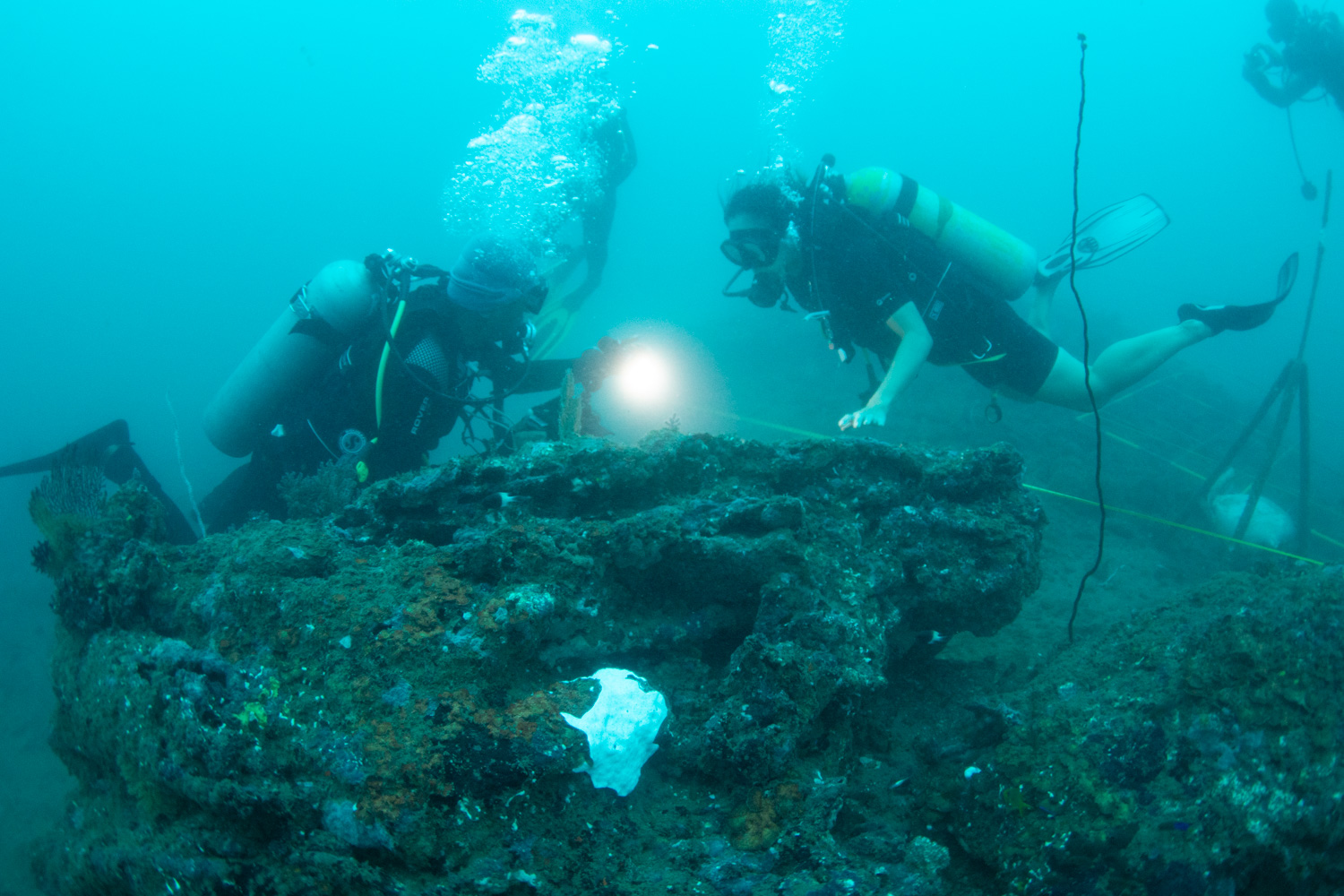
U.S. Ambassador Julie Chung alongside members of the Central Cultural Fund at the staging site for the conservation work on the Godawaya shipwreck.
- The Godawaya shipwreck is the oldest known shipwreck in the Asia-Pacific Region
- The initiative has been funded by the U.S. Ambassadors Fund for Cultural Preservation
- Funding for the project began in 2022 in effort to study and safeguard the submerged cultural treasure dating back to the 2nd Century B.C

The U.S. Embassy in Colombo, in partnership with the Central Cultural Fund’s Maritime Archaeology Unit, has undertaken a significant step in preserving Sri Lanka’s rich maritime history through the conservation and documentation of the Godawaya Shipwreck, the oldest known shipwreck in the Asia-Pacific region. The initiative, funded by the U.S. Ambassadors Fund for Cultural Preservation, underscores the enduring partnership between the United States and Sri Lanka in cultural preservation and archaeological research.
U.S. Ambassador to Sri Lanka, Julie Chung, along with Counselor for Public Affairs at the U.S. Embassy Heidi Hattenbach, and Senior Archeology Officer of the Central Cultural Fund’s Maritime Archaeology Unit Rasika Muthucumarana led an inspection dive to the ancient Godawaya shipwreck off the coast of Hambantota. This venture is part of a broader effort supported by the U.S. Ambassadors Fund for Cultural Preservation, which began funding the project in 2022 to study and safeguard the submerged cultural treasure dating back to the 2nd Century B.C.
Ambassador Chung expressed her awe and the importance of the mission, stating, “Witnessing the Godawaya shipwreck firsthand at 33 meters below the surfaces of the ocean was a breathtaking experience, shedding light on Sri Lanka’s significant history as a pivotal maritime hub. The United States is proud to support this endeavor, enhancing the understanding of Sri Lanka’s historical role in global maritime trade and ensuring the preservation of its rich cultural legacy for future generations.”
Adding to the Ambassador’s sentiments, Counselor for Public Affairs Heidi Hattenbach highlighted the project’s unique value, “We are honoured to partner with the Maritime Archeology Unit on the study and preservation of this important site, a partnership that has supported skilled Sri Lankan divers and researchers to really dive deep into an important avenue of Sri Lanka’s maritime history. Over the coming months, their dedicated efforts will deepen the understanding and accessibility of Sri Lanka’s underwater cultural heritage, paving the way for future archaeological discoveries and conservation initiatives.”
Senior Archeology Officer Rasika Muthucumarana, reflecting on the technical aspects and the depth of the project, added, “Collaborating with the U.S. Embassy on this Godawaya shipwreck excavation project has been an honour. While the depths of our explorations present unique challenges, the shared commitment to unveiling the truths and preserving the history of ancient maritime routes and trade practices creates a strong bond between our teams. This partnership is a model for future cultural preservation endeavors.”
Located in Galle, the Maritime Archaeology Unit (MAU) is dedicated to the preservation and exploration of Sri Lanka’s rich underwater cultural heritage, conducting extensive research, and applying advanced conservation techniques. The Godawaya shipwreck, the oldest known shipwreck in the Indian Ocean and in the Asia-Pacific Region, is one of the MAU’s most significant ongoing projects. Initial research efforts have unveiled a treasure trove of information, revealing that the ship was laden with a diverse cargo, including potential ingots of iron and glass, alongside finished stone querns and ceramic bowls. Through funding support of the Ambassadors Fund for Cultural Preservation, the MAU has been able to safeguard nearly 200 artifacts unearthed from the wreck, ranging from clay pottery to metal objects and intricate carnelian beads. The U.S. funding has been instrumental in facilitating the initial stages of site preparation and enabling the unit to employ 3D modeling techniques for comprehensive site surveying. As the project progresses, the MAU is on track to develop a complete 3D model of the entire shipwreck site, a milestone that promises to revolutionize the field of maritime archaeology and cultural preservation in Sri Lanka. The artifacts removed from the shipwreck will be on display in Colombo at the end of the year, and then will eventually be housed in a permanent exhibit at the Maritime Archaeology Museum in Galle for Sri Lankans and tourists to visit, view, and learn about the country’s rich history. The AFCP will also fund an education programme that will bring opportunities to learn from the Godawaya project to schools and students close to the dive site.











